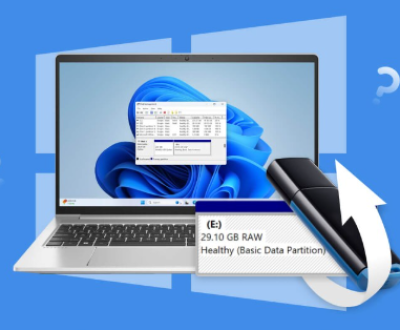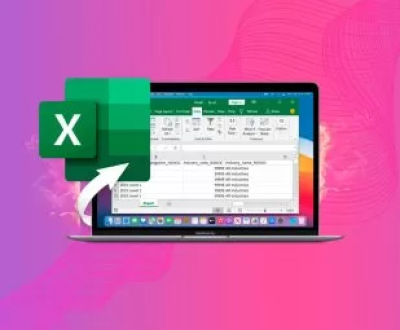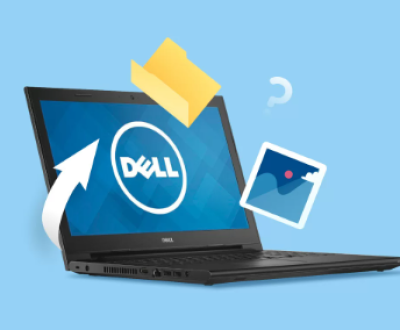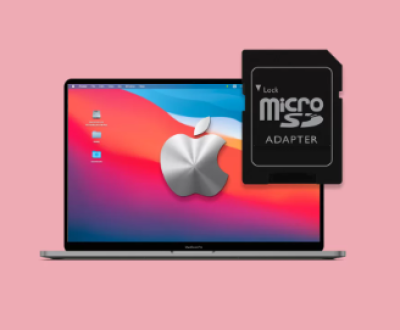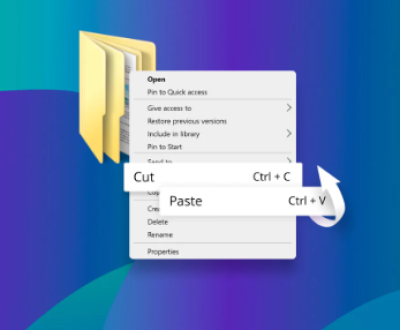USB sticks (also called flash drives, pen drives, or thumb drives) are an essential tool for transferring and storing data. They are portable, affordable, and easy to use. However, despite their reliability, data loss on USB sticks can happen due to a variety of reasons, including accidental deletion, corruption, or physical damage. Whether the data has been lost due to human error, formatting, or corruption, retrieving that data is possible through various techniques and tools.
Basics of USB Stick Storage
Before diving into the recovery process, it’s important to understand how data is stored on a USB stick. A USB stick typically uses NAND flash memory, which retains data even when the power is turned off. However, unlike traditional hard drives, flash memory has a limited number of read/write cycles. When a USB stick becomes corrupted or its file system is damaged, the data may still physically exist on the drive but may not be accessible without proper recovery methods.
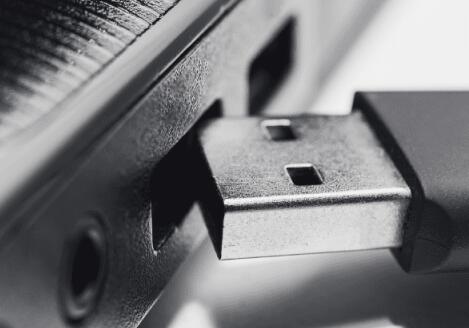
The file system format on the USB stick can affect how you recover the data. Common file systems for USB sticks include:
FAT32: Often used for USB sticks because it’s compatible with both Windows and macOS, but has a 4GB file size limit.
exFAT: Common for USB drives that store larger files and works across multiple operating systems.
NTFS: Mainly used for Windows but allows larger file sizes than FAT32.
Step 1: Preliminary Checks
Before jumping into data recovery, take a few basic troubleshooting steps to ensure the USB stick isn’t simply malfunctioning due to minor issues.
1.1. Try a Different USB Port
Sometimes, the problem could be with the port rather than the USB stick itself. Try plugging the USB into another port on your computer or another computer entirely to rule out any hardware-related issues.
1.2. Check for Physical Damage
Inspect the USB stick for any visible signs of physical damage. If there are cracks or broken connectors, the drive might need professional recovery services. Physical damage can result in data being unreadable, but in some cases, professional services may still be able to recover it.
1.3. Ensure the Drive is Not Locked or Write-Protected
Some USB sticks come with a physical write-protection switch. If the switch is in the “locked” position, you won’t be able to access or modify the files. Make sure the switch is in the “unlocked” position.
Step 2: Check Your Operating System’s Built-in Tools
If the USB stick is still not accessible, it might be due to file system issues or corruption. In this case, you can try using your operating system’s built-in tools to attempt a fix.
2.1. Using Windows Built-In Tools
Windows provides built-in utilities for fixing USB stick issues. Here’s how you can check and repair your USB drive:
Open File Explorer and right-click on the USB drive.
Select Properties and go to the Tools tab.
Click on Check under the Error-checking section. Windows will check the drive for file system errors and attempt to fix them.
If Windows detects no errors but the drive is still inaccessible, try using the chkdsk command. Open Command Prompt as an administrator, and type:
bash
chkdsk X: /f
Replace X with the letter of your USB drive. This command will attempt to fix any file system errors that might be preventing access.
2.2. Using macOS Built-In Tools
On macOS, you can use the Disk Utility tool to check and repair your USB stick:
Open Disk Utility from the Applications > Utilities folder.
In the left-hand panel, select your USB stick.
Click on First Aid and then Run. This will attempt to repair the file system and fix any minor issues.
If this doesn’t work, the next step is to consider third-party software.
Step 3: Using Data Recovery Software
If your USB stick is still not working or files are inaccessible, you can use data recovery software to recover the lost data. There are many data recovery tools available, both free and paid, that can scan your USB stick for lost or deleted files.
Here are some popular data recovery tools that can help:
Panda Assistant is a powerful and user-friendly data recovery software designed to help individuals and businesses recover lost or deleted files from various storage devices, including hard drives, USB drives, memory cards, and more. With its intuitive interface and advanced recovery algorithms, Panda Assistant provides an efficient and reliable solution for users facing data loss due to accidental deletion, formatting, corruption, or other issues. This software is particularly valuable for those who want to recover important files without the need for complex technical skills or expensive professional services.
Key Features of Panda Assistant
User-Friendly Interface One of the standout features of Panda Assistant is its user-friendly interface. The software is designed to be accessible to both novice and experienced users. The recovery process is straightforward, involving just a few steps: selecting the device, scanning for lost files, and recovering the files to a specified location. This simplicity makes it ideal for individuals who need quick solutions without any complicated configurations.
Wide Device Compatibility Panda Assistant supports a broad range of storage devices, including internal and external hard drives, USB flash drives, SD cards, memory cards, and even some cameras and other media devices. Whether your data loss occurred on a computer, laptop, smartphone, or other device, Panda Assistant can help retrieve your files.
Advanced Scanning Modes The software offers multiple scanning modes to increase the chances of successful data recovery. These include:
Quick Scan: This mode is ideal for recovering recently deleted files and is fast and efficient.
Deep Scan: If the quick scan doesn’t yield the desired results, the deep scan mode thoroughly checks the storage device, increasing the likelihood of recovering files that are severely corrupted or formatted.
Support for Multiple File Formats Panda Assistant can recover a wide variety of file types, including documents, photos, videos, audio files, emails, and much more. Whether you’ve lost important work documents or cherished family photos, the software can help you retrieve them.
Preview Before Recovery Another useful feature is the ability to preview files before recovering them. This feature helps users confirm that the files they wish to recover are intact and accessible, giving them more control over the recovery process.
Safe Recovery Process Panda Assistant ensures that the recovery process is safe and doesn’t overwrite any existing data. When you recover your files, it prompts you to save them to a different location (such as another drive or external storage), minimizing the risk of further data loss.
Cross-Platform Compatibility Panda Assistant is available for both Windows and macOS, making it accessible to a wide range of users across different operating systems. This cross-platform compatibility ensures that users from all walks of life can use the tool regardless of their device preference.
Why Choose Panda Assistant?
Reliability: Panda Assistant is backed by advanced algorithms and technology, ensuring that you can recover data from a variety of scenarios, including accidental deletion, formatting, corruption, and even physical damage in some cases.
Affordable Pricing: Compared to professional data recovery services, Panda Assistant offers an affordable solution for data recovery. Users can recover lost files on their own without incurring the high costs of professional help.
Comprehensive Support: The software provides excellent customer support to assist with any issues or questions during the recovery process. Whether you’re troubleshooting an error or need guidance on how to recover specific types of data, the support team is readily available.
4.1. Signs of Physical Damage
Physical damage could occur due to bending, water exposure, or electrical issues. Signs of physical damage include:
The USB stick is not recognized by any computer.
The USB stick is physically cracked or has exposed internal components.
The USB stick is making unusual noises (in the case of internal mechanical parts).
4.2. When to Seek Professional Help
If your USB stick is physically damaged, it’s important to stop using it immediately to avoid further data loss. A professional data recovery service can assess the damage and attempt to recover the data using specialized tools. These services can be expensive, but they may be your only option for recovering data from a physically damaged USB drive.
Step 5: Preventing Future Data Loss
While data recovery is possible, it’s always better to prevent data loss in the first place. Here are a few best practices to ensure the safety of your data in the future:
5.1. Backup Regularly
Make it a habit to back up your important files. Use cloud storage services like Google Drive, Dropbox, or OneDrive, or create backups on external hard drives or network-attached storage (NAS).
5.2. Use a Secure USB Drive
Consider using a USB stick with built-in encryption or password protection for an extra layer of security. This ensures that even if the drive is lost or stolen, your data remains protected.
5.3. Eject USB Safely
Always eject your USB stick safely from your computer before physically removing it. This reduces the risk of file corruption and damage to the file system.
About us and this blog
Panda Assistant is built on the latest data recovery algorithms, ensuring that no file is too damaged, too lost, or too corrupted to be recovered.
Request a free quote
We believe that data recovery shouldn’t be a daunting task. That’s why we’ve designed Panda Assistant to be as easy to use as it is powerful. With a few clicks, you can initiate a scan, preview recoverable files, and restore your data all within a matter of minutes.
Subscribe to our newsletter!
More from our blog
See all postsRecent Posts
- Retrieve files from usb 2025-07-04
- How to retrieve overwritten excel file 2025-07-04
- How to retrieve lost files on sd card 2025-07-04

 Try lt Free
Try lt Free Recovery success rate of up to
Recovery success rate of up to

